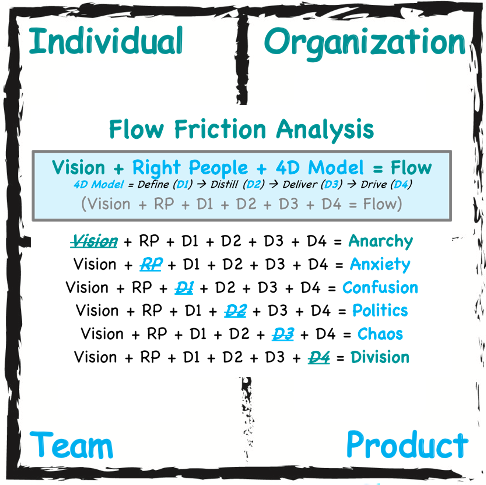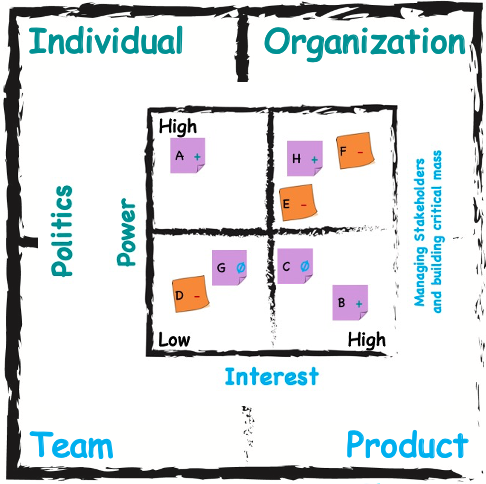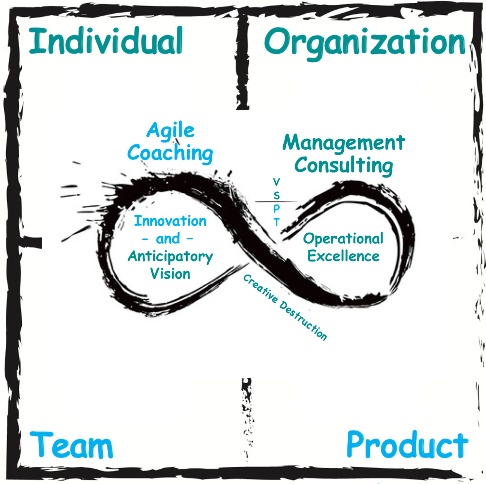
Using the Flow Leadership Framework to heal broken projects
Recently, one of my friends over at Tiba, Reinhard Wagner, shared an excellent article on Kintsugi written by Professor Jiwat Ram. Kintsugi is the Japanese art of repairing broken porcelain with either gold or silver infused glue. Professor Ram put it this way:
“Kintsugi is a traditional Japanese healing technique to repair the broken pots. The technique entails gluing together the broken parts of pottery with a lacquer painted with gold or silver powder.”
In his article, Professor Ram outlined the following areas that are needed to heal a project:
- Accept the change
- Identify the broken elements and strategize how to glue them together
- Identify and manage stakeholders’ apprehensions
- Identify the tools and techniques that can be used for the recovery process
- Bring in the resources that know how to glue the broken parts
- Accept imperfections
- Provide leadership on Kintsugi process and raise awareness
The elements of the Kintsugi “philosophy” mirrors the Flow Leadership Formula:
- Vision + RP (Right People) + the 4D Model (Define, Distill, Deliver and Drive)
Vision is the Gold/Silver “glue” that brings it all back together and I have used it many times to successfully recover projects that had gone up in flames.
Let’s resort the remaining items on Professor Ram’s list using the Flow Leadership Formula:
Vision (accept the change)
It is not enough to merely “accept the change,” although resisting the change is a guaranteed fast track to failure. The failure rates of most Traditional/Waterfall projects are in the range of 83-86%. Depending upon which study you use, only 14-17% of projects meet the threshold of delivering 80% of the scope/benefits, on-time and on-budget. Agile succeeds 42% of the time, but that is still a failure rate of 58%.
The economic losses of these project failures are truly staggering on a global scale (for all projects attempted, worldwide). Having an unclear (or no) Vision is the primary cause of these failures. And, we can do better.
It is the Vision for the change that needs to be communicated ten (10) times more than we think. To quote Dr. John Kotter:
“Most companies under communicate their visions for change by at least a factor of 10.”
It is fascinating, and somewhat stunning, that most company leaders have completely missed something so simple as communicating your Vision, over-and-over again, until it is embedded in the DNA of the organization.
Right People (Bring in the resources that know how to glue the broken parts)
Everyone likes to believe that they are always the “Right Person.” We probably all have a similar view of ourselves:
Professor Ram shared:
“Using this philosophical underpinning, bringing in the right talent is critical when it comes to fixing the broken parts in a project as well. A rightful talent will be the one with required skills, experience and attitude to help heal the problem.”
In some instances, the project is dead and the people are broken. It is not enough just to “heal” the project. You literally need people who know how to breathe life back into the work effort. So now we have moved away from Project Management and into the realm of Leadership. Peter Drucker summed it up best:
“Only three things happen naturally in organizations…
- friction,
- confusion, and
- underperformance
…everything else requires leadership.”
The Flow Leadership Friction Analysis is a very quick way to identify the cause of the friction, based on the observed result that is manifesting with your teams and team members:
If you do not have the Right People on your team, then the team members will be exhibiting anxiety. It is not possible to heal anything, let alone breathe life back into it, if anxiety is present in your team.
The 4D Model
The balance of Professor Ram’s list will be addressed using the 4D Model:
Vision is always at the heart of the 4D Model and we address the link to Vision earlier in this post, so let’s start with the first “D” – Define.
D1 – Define (Identify the broken elements and strategize how to glue them together; and, Identify the tools and techniques that can be used for the recovery process)
The Flow Leadership Framework is methodology agnostic. Regardless of the methodology used at the team level, almost without exception, the major disconnect is always between the Vision & Strategy and the People & Tasks that will Deliver on that Vision and Strategy.
In Flow, we use the VSPT Model to visualize this disconnect:
The line between the VS and PT represents that disconnect. In order to succeed, that disconnect must be removed. And, whatever glue that you use to try to hold the project together, will fail.
Along with Vision and Right People, VSPT is one of your key Definitions. And, your VSPT and One Thing needs to be cascaded throughout your organization and linked-back as well:
Without the right Definitions, your work effort will fail. And, as Dr. Kotter points out, you need to communicate the Vision ten times more than you think that you need to do.
But, having the right Definitions, alone, will not assure success. You also need to Distill agreement.
D2 – Distill (Identify and manage stakeholders’ apprehensions)
Usually, most Stakeholders have expectations for their team members something along these lines:
The Flow Leadership Framework has a very unique way of dealing with and mitigating the impacts of Politics.
If your stakeholders are apprehensive or anxious, then there is a high probability that they are not the right person to sponsor your project / work effort.
The primary cause of this apprehension is that they do not have and/or cannot communicate a clear Vision for the Result that they wish to achieve.
We look at this from the following perspective in Flow:
We have an additional view that also visualizes the same Stakeholders using Power vs. Effort. Although a Stakeholder may have a high level of Interest (as in the image above), they might not put in any Effort towards the success of your work efforts.
This way of analyzing your Stakeholders (and thus, how to influence them) quickly becomes multi-dimensional when you factor in whether or not the Stakeholder is “for you” on a personal level, let alone whether or not they are “for” your project.
Developing what we call “critical mass” requires Distilling agreement among the stakeholders. If you do not have agreement, then you most likely will see high levels of Politics in your organization.
Wise leaders will obtain agreement.
This is how we mitigate / eliminate Politics (and keep it from derailing your project / product development effort). Once you have your Definitions and have Distilled agreement, you can then begin to iteratively Deliver (small batches and often).
D3 – Deliver (Accept imperfections)
During the past three (3) decades, I have yet to see a single project or product development effort where the starting WBS (work breakdown structure) or PBL (product backlog) that matched the ending one. There is always one Stakeholder that will say something along the lines of, “oh, by the way, can we make this one ‘small’ change to the scope?”
The PBL / WBS will always be wrong. Accept that imperfection and start Delivering something that is one step closer to fulfilling your Vision. Over time, your PBL / WBS should encompass the entire Vision of whatever it is that you are trying to achieve.
Although Flow is intuitive and simple, it is not easy. Ensuring success requires that you and your team can juggle some 18 different areas (or “tiles” as we call them in Flow), simultaneously:
This is similar to being the plate-spinner at the circus:
Keeping the plates spinning at the right velocity is an art, not a science. This is why Vision, People and the 4D Model are essential to your success. And, as pointed out in Peter Drucker’s quote above, this requires Leadership. We call this Drive in the Flow Leadership Framework.
D4 – Drive (Provide leadership on Kintsugi process and raise awareness)
Kintsugi is a great metaphor that speaks the language of Leadership. By Delivering in short cycles and batches, you can quickly course correct should your team start to spin off the table.
Leadership goes beyond toolsets and retrospectives. It’s all about mindsets. Often, managers and project managers miss the subtle difference between the two of these. Both are necessary. It looks something like this:
Management is all about getting the hard work done and operational excellence. Leadership is all about inspiring, breathing life into your teams and bringing healing where it is most needed. That’s the heart and essence of Servant Leadership. Being a “servant” doesn’t make you weak. it is actually quite the opposite:
It is your role, as the leader, to break down the organizational obstacles that are hindering your teams from Delivering truly remarkable Results!
Kintsugi is a good allegory to quickly communicate to your teams how we can recover projects that may have ended in disaster. And, all of the points shared by Professor Ram in his article about Kintsugi are mirrored in the Flow Leadership Framework … which is your roadmap to success.
Flow plugs the leadership gaps inherent in all Agile and Traditional methodologies. If you want to learn how to rescue broken teams, then let’s keep the conversation Flowing – let’s chat!
PS Here are the associated links to this blog post for:
#kintsugi #scrum #agile #pmi #pmp #culture#kanban#lean #flow #scaledagile #transformation #change #transform










